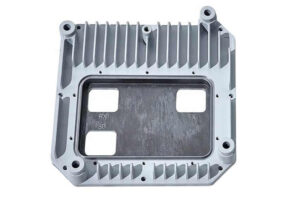Enhancing Telecommunication Connectivity and Performance through Die Casting

In the rapidly expanding realm of telecommunication, the demand for seamless connectivity and high-performance equipment continues to grow. It has emerged as a cutting-edge manufacturing process that offers significant advantages in producing precise and durable telecommunication components. This article will explore the concept, benefits, applications, and the role of telecommunication die casting in driving the industry forward.
1. Understanding Telecommunication Die Casting:
It is a highly efficient manufacturing technique that involves injecting molten metal into a custom-designed mold. This process utilizes high pressure to create complex and intricate telecommunication components with exceptional dimensional accuracy. The result is reliable, high-quality products with superb functionality and durability.
2. Benefits of Telecommunication Die Casting:
2.1 Enhanced Connectivity: Die casting allows for the creation of telecommunication components with superior conductivity, ensuring efficient signal transmission and reception. This leads to improved connectivity and minimizes signal loss or distortion, resulting in enhanced overall performance.
2.2 Design Freedom and Precision: The die casting process enables the production of intricate and customized designs that are difficult to achieve with other manufacturing methods. This versatility empowers telecommunication companies to create unique and visually appealing products while maintaining precise tolerances.
2.3 Durability and Longevity: Telecommunication die cast components exhibit excellent mechanical properties, including high strength, corrosion resistance, and thermal conductivity. These attributes make them ideal for withstanding the challenges of various environments, ensuring long-term reliability and extended product lifecycles.
2.4 Cost Efficiency: Die casting offers cost advantages through its ability to produce high volumes of components quickly and consistently. This mass production capability reduces labor costs and optimizes production efficiencies, resulting in competitive pricing for telecommunication equipment.
3. Applications of Telecommunication Die Casting:
3.1 Antennas and Waveguides: Die casting enables the creation of precisely engineered antennas and waveguides that deliver optimal signal transmission and reception capabilities. These essential components are vital for the seamless connectivity of telecommunication devices.
3.2 Connectors and Housings: Telecommunication die casting is instrumental in manufacturing connectors and housings that provide robust electrical connections and mechanical protection. These components ensure stable connectivity and safeguard sensitive electronic elements from external environmental factors.
3.3 Heat Dissipation Solutions: Die cast heat sinks and heat spreaders effectively manage thermal dissipation in telecommunication equipment. By efficiently diverting and dissipating heat, these components prevent performance degradation and enhance the lifespan of devices.
4. Embracing Our Services:
4.1 Quality Assurance: Partnering with experienced and reputable die casting experts ensures the production of high-quality telecommunication components. Stringent quality control protocols and advanced testing methods guarantee superior performance and reliability.
4.2 Collaboration and Innovation: Engaging in collaborative partnerships with die casting manufacturers fosters continuous innovation. Collaborations enable the exploration of new design possibilities, material advancements, and process optimizations, leading to superior telecommunication products.
4.3 Sustainability Considerations: Adopting environmentally conscious die casting practices, such as using recyclable materials and optimizing energy consumption, aligns with the growing emphasis on sustainability and corporate social responsibility.
Conclusion:
It presents an array of benefits ranging from enhanced connectivity and design flexibility to durability and cost efficiency. As the telecommunication industry continues to evolve, incorporating die casting technology is crucial to stay competitive and meet the demands of an increasingly connected world. By leveraging the capabilities of this advanced manufacturing process, businesses can produce telecommunication components that deliver exceptional performance, reliability, and user satisfaction.






